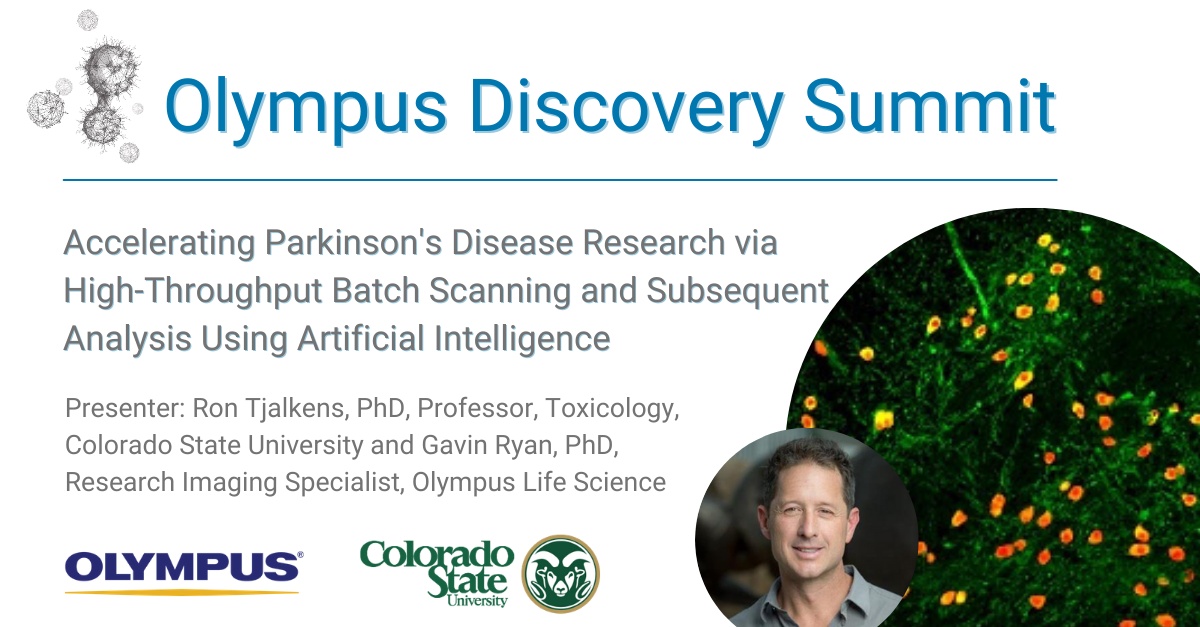Accelerating Parkinson's Disease Research via High-Throughput Batch Scanning and Subsequent Analysis Using Artificial Intelligence
Two common bottlenecks in research are the time to acquire images and the time for analysis. Reducing this time can lead to an increase in publications for any research group. As a result of pairing the SLIDEVIEW™ VS200 slide scanner with TruAI™ artificial intelligence, data volume has significantly increased for Dr. Ron Tjalkens at Colorado State University. The Tjalkens Group is currently using Olympus’ TruAI deep-learning software to establish neural networks for quantitative determination of the number of neurons and glial cells in multiple brain regions in mouse models of Parkinson’s disease. Images of up to twenty-four whole-brain montages were acquired with the VS200 scanner during a recent demonstration. These images were then uploaded to the TruAI deep learning software, where batch analysis was performed for multiple labels specific to the phenotype of neurons, astrocytes, or microglia. In this presentation, hear how Dr. Tjalkens’ use of the VS200 slide scanner and TruAI deep-learning technology are estimated to have reduced a six-month project to just two weeks. TruAI technology has also brought new capabilities by advancing analysis that would be too time consuming and complex by conventional software analysis.
Presenters: Gavin Ryan, PhD, Research Imaging Specialist, Olympus Life Science and Ron Tjalkens, Professor, Toxicology, Colorado State University


Dr. Gavin Ryan moved to the US from Ireland in 2004 and worked at Colorado State University until joining Olympus in 2012. His PhD focused on immunodeficiency viruses and neuronal infection. After experiencing the immense impact of motorized microscopy on productivity, he decided to join Olympus and provide advanced microscopy solutions to fellow researchers.
Ron Tjalkens' research projects focus on neuroinflammatory mechanisms in neurodegenerative disorders, particularly disorders of the basal ganglia such as manganism and Parkinson’s disease. Specific areas of interest include inflammatory activation of microglia and astrocytes, astrocyte biology and calcium signaling, mitochondrial dysfunction, and molecular regulation of neuro-inflammatory genes. Approaches emphasize multi-dimensional fluorescence imaging, transgenic models, and molecular approaches to modulate gene expression in neural cells.
Accelerating Parkinson's Disease Research via High-Throughput Batch Scanning and Subsequent Analysis Using Artificial Intelligence
|
Sorry, this page is not
available in your country.
